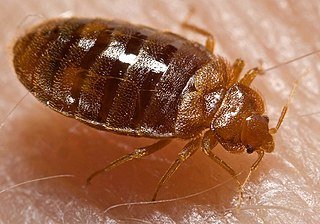
Image Credit: CDC
In recent years, bed bugs have become an increasing concern for people worldwide. These small, parasitic insects are notorious for their bites, leading to skin irritation, sores, itchiness, and potentially worse. This article explores the ins and outs of bed bug bites, including their symptoms, identification, prevention, and treatment.
Understanding Bed Bugs: Bed bugs are tiny parasites that feed on human blood, causing discomfort and distress. While they don't transmit diseases, their bites can lead to skin irritation, allergic reactions, and sleep disturbances. Bed bugs are most active during the night, and they tend to bite areas of the body that are exposed while sleeping, such as the neck, face, arms, and legs.
Symptoms of Bed Bug Bites: Identifying bed bug bites can be challenging. The bites often appear as itchy, red welts, sometimes forming a line or zigzag pattern. In some cases, individuals may not even notice the bites immediately. Severe reactions can include blisters, fever, and allergic responses.
Prevention and Control: Preventing bed bug bites requires vigilance. To minimize the risk, travelers should be able to distinguish bed bugs from other pests. Good hygiene practices, such as cleaning wounds with soap and water, can help alleviate minor symptoms. Over-the-counter remedies, like hydrocortisone and antihistamines, can provide relief for itching and inflammation.
Identifying Bed Bugs: Recognizing bed bugs is crucial for preventing infestations. Adults are easier to spot than nymphs, with oval-shaped bodies and a reddish-brown color. They are roughly the size of an apple seed. Controlling bed bugs involves the complete removal of their eggs, as one female can lay up to 345 eggs during her lifetime.
Preventing Bed Bug Infestations: The best way to avoid bed bug bites is to stop these pests from entering your environment. Bed bugs tend to hide during the daytime in cracks, crevices, and furniture seams. When traveling, keep luggage off the floor and inspect your sleeping area for signs of bed bugs. Don't bring secondhand furniture into your home without careful inspection.
Controlling Bed Bugs: In severe cases, where bed bug infestations persist, furniture and infected items may need to be destroyed to prevent further issues. Home tips for controlling infestations include washing and drying bedding at high temperatures, vacuuming upholstered items, sealing cracks and crevices, and using hand steamers.
In summary, understanding bed bug bites, their symptoms, and preventive measures is crucial for maintaining a bed bug-free environment. Identifying these pests and taking appropriate action can make all the difference in ensuring a good night's sleep and a pest-free living space.
Seeking Professional Service: If your efforts prove insufficient, consider hiring pest control professionals experienced in tackling challenging bed bug infestations.




